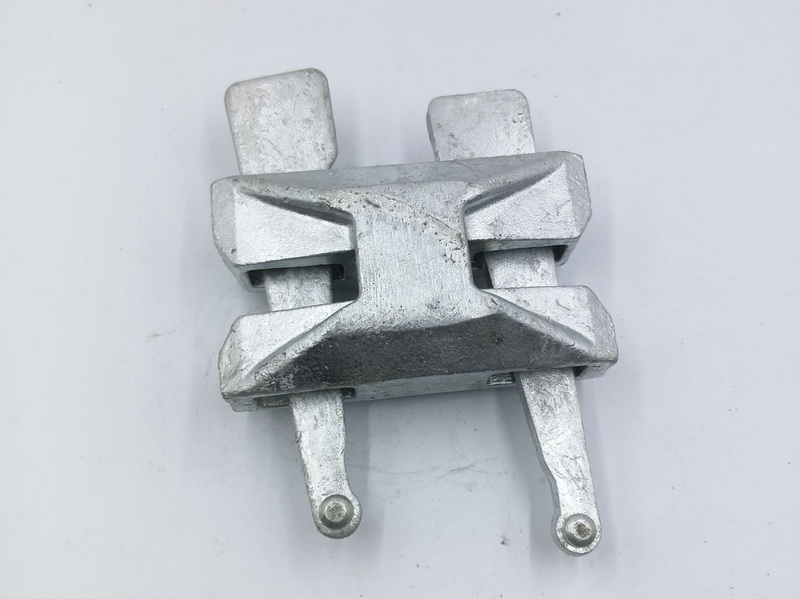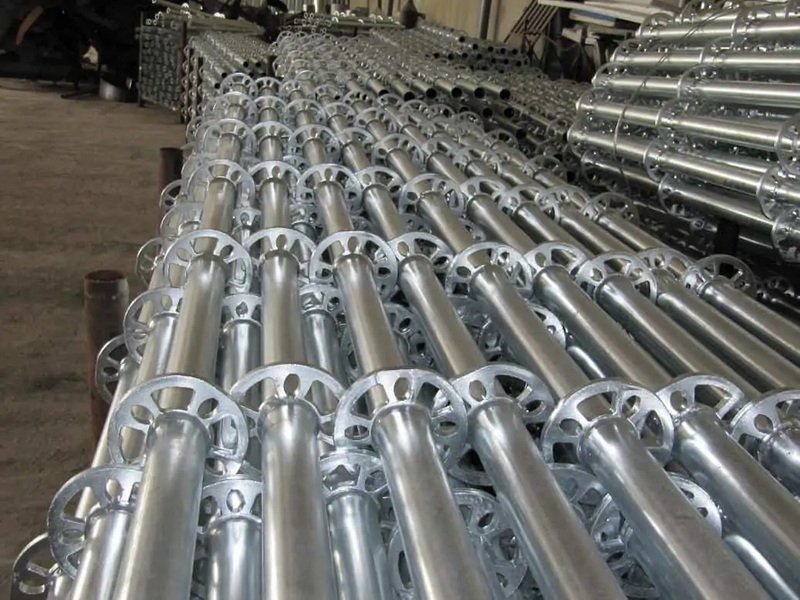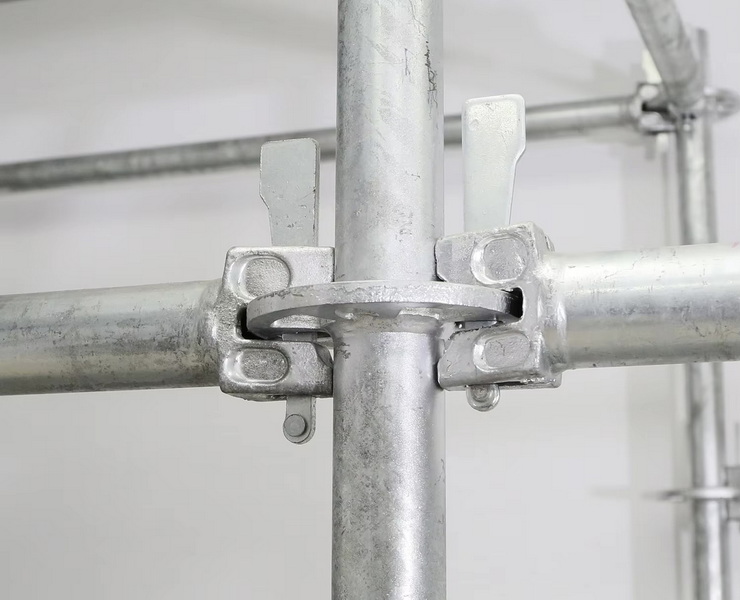Content Menu
● What is Wedge Lock Scaffolding?
● Advantages of Wedge Lock Scaffolding
● Applications of Wedge Lock Scaffolding
● Comparative Analysis with Other Scaffolding Systems
>> 1. Tube-and-Clamp Scaffolding
>> 2. Cuplock Scaffolding
>> 3. Frame Scaffolding
● Safety Considerations
● Maintenance Tips for Wedge Lock Scaffolding
● Case Studies Highlighting Wedge Lock Scaffolding Success
>> Case Study 1: High-Rise Building Construction
>> Case Study 2: Bridge Rehabilitation
>> Case Study 3: Industrial Facility Maintenance
● Environmental Considerations
● Conclusion
● FAQ
>> 1. What is the primary advantage of using wedge lock scaffolding?
>> 2. How does wedge lock scaffolding ensure safety?
>> 3. Can wedge lock scaffolding be used for heavy-duty applications?
>> 4. Is training required to use wedge lock scaffolding?
>> 5. How does wedge lock scaffolding compare to traditional systems?
● Citations:
Wedge lock scaffolding systems have become increasingly popular in the construction industry due to their unique advantages over traditional scaffolding methods. This article will explore the reasons why wedge lock scaffolding is often preferred, highlighting its features, benefits, and applications. We will also provide visual aids and videos to enhance understanding and engagement.

What is Wedge Lock Scaffolding?
Wedge lock scaffolding is a modular scaffolding system that utilizes wedge-shaped connectors to secure vertical and horizontal components. This design allows for quick assembly and disassembly, making it ideal for various construction projects. The system consists of several key components:
- Vertical Standards: These are the main support structures.
- Horizontal Ledgers: These connect the vertical standards and provide a platform for workers.
- Wedge Locks: These are used to secure the connections between verticals and horizontals.
Advantages of Wedge Lock Scaffolding
1. Ease of Assembly: One of the most significant advantages of wedge lock scaffolding is its ease of assembly. The wedge locking mechanism allows for quick connections without the need for additional tools or fittings, significantly reducing setup time. This feature is particularly beneficial on busy job sites where time is money.
2. High Stability and Safety: The wedge lock system provides a rigid connection that enhances overall stability. This is crucial in ensuring worker safety, especially at heights. The design minimizes lateral movement and sway, reducing the risk of accidents.
3. Versatility: Wedge lock scaffolding can be adapted to various construction needs, making it suitable for residential, commercial, and industrial projects. Its modular nature allows for easy customization depending on project requirements.
4. Durability: Made from high-strength steel, wedge lock scaffolding is designed to withstand heavy loads and harsh environmental conditions. It resists corrosion and wear, ensuring a long lifespan even with frequent use.
5. Cost-Effectiveness: The efficiency in assembly and disassembly translates into lower labor costs, making it a cost-effective solution for construction companies. Additionally, its durability reduces replacement costs over time.
Applications of Wedge Lock Scaffolding
Wedge lock scaffolding systems are used in a wide range of applications:
- Building Construction: Ideal for both residential and commercial buildings, wedge lock scaffolding provides safe access for workers during construction phases.
- Industrial Maintenance: Provides safe access for maintenance work in factories and plants, allowing workers to perform repairs and inspections safely.
- Bridge Construction: Used to create stable platforms for workers during bridge repairs or constructions, ensuring safety while working at height.
- Event Staging: Wedge lock scaffolding can also be utilized in temporary structures for events such as concerts or festivals, providing safe access for performers and crew.
- Facade Work: When working on building facades, this scaffolding system allows easy access to all areas while maintaining stability.
Comparative Analysis with Other Scaffolding Systems
To fully appreciate the advantages of wedge lock scaffolding, it's essential to compare it with other common scaffolding systems:
1. Tube-and-Clamp Scaffolding
Tube-and-clamp scaffolding involves connecting tubes with clamps at various angles. While it offers flexibility in design, it requires more time to assemble due to the number of components involved. Additionally, it may not provide the same level of stability as wedge lock systems since connections can loosen over time if not properly secured.
2. Cuplock Scaffolding
Cuplock scaffolding uses cups welded onto vertical posts to secure horizontal members. While this system offers good stability and speed in assembly compared to tube-and-clamp systems, it still falls short when compared to the rapid setup offered by wedge lock systems. Furthermore, cuplock systems may require more maintenance over time due to wear on the cups.
3. Frame Scaffolding
Frame scaffolding consists of pre-fabricated frames that are stacked together. While this system is relatively quick to set up, it lacks the versatility offered by wedge lock systems. Frame scaffolds are often limited in height adjustments and configurations compared to modular wedge lock designs.

Safety Considerations
When using any scaffolding system, safety should always be a top priority. Here are some safety considerations specifically related to wedge lock scaffolding:
- Regular Inspections: Conduct regular inspections of all components before use to ensure they are free from damage or wear.
- Proper Training: Ensure that all personnel involved in assembling or using the scaffold are properly trained on its use and safety protocols.
- Load Limits: Always adhere to load limits specified by manufacturers to prevent overloading the scaffold.
- Fall Protection: Use appropriate fall protection measures such as guardrails or personal fall arrest systems when working at heights.
Maintenance Tips for Wedge Lock Scaffolding
To ensure longevity and optimal performance of your wedge lock scaffolding system, consider these maintenance tips:
1. Cleaning: Regularly clean all components to remove dirt and debris that may cause corrosion or wear over time.
2. Storage: Store components in a dry location when not in use to prevent rusting or damage from weather conditions.
3. Inspection: Perform periodic inspections to check for any signs of wear or damage that may compromise safety.
4. Replacement Parts: Keep a stock of replacement parts on hand so that damaged components can be quickly replaced without significant downtime on job sites.
Case Studies Highlighting Wedge Lock Scaffolding Success
Case Study 1: High-Rise Building Construction
In a recent high-rise building project in downtown Chicago, contractors opted for wedge lock scaffolding due to its rapid assembly capabilities. With tight deadlines imposed by city regulations, the team was able to erect multiple levels of scaffolding within days rather than weeks using traditional methods. This efficiency allowed them to stay on schedule while maintaining safety standards throughout the project.
Case Study 2: Bridge Rehabilitation
A bridge rehabilitation project required extensive work at heights where traditional scaffolding would have been cumbersome and time-consuming. The use of wedge lock scaffolding provided a stable platform for workers while allowing them easy access to various sections of the bridge without needing constant reconfiguration—a significant advantage that saved both time and labor costs.
Case Study 3: Industrial Facility Maintenance
An industrial facility undergoing maintenance chose wedge lock scaffolding for its ability to adapt quickly to different areas needing attention. Workers reported feeling safer due to the stability provided by the wedge locks during their tasks at elevated heights—resulting in fewer incidents compared with previous projects utilizing other systems.
Environmental Considerations
As sustainability becomes increasingly important in construction practices, wedge lock scaffolding shines as an environmentally friendly option:
- Reusability: The modular nature allows components to be reused across multiple projects without significant wear.
- Reduced Waste: Fewer materials are wasted during assembly compared with traditional methods that often involve cutting materials down or discarding damaged parts.
- Sustainable Materials: Many manufacturers produce wedge lock systems using recycled materials or environmentally friendly processes, contributing positively towards green building certifications like LEED (Leadership in Energy and Environmental Design).
Conclusion
In conclusion, wedge lock scaffolding offers numerous benefits that make it an excellent choice for construction projects. Its ease of use, stability, versatility, durability, cost-effectiveness, adaptability across various applications—including high-rise buildings, bridges, industrial facilities—and environmental considerations set it apart from other scaffolding systems. As construction demands continue to evolve alongside sustainability efforts within industries worldwide adopting innovative solutions like wedge lock scaffolding will be essential for ensuring safety efficiency on job sites while minimizing environmental impact.

FAQ
1. What is the primary advantage of using wedge lock scaffolding?
The primary advantage is its ease of assembly due to the unique wedge locking mechanism that allows for quick connections without additional tools.
2. How does wedge lock scaffolding ensure safety?
The rigid connections provided by the wedge locks enhance stability, reducing the risk of accidents during construction work.
3. Can wedge lock scaffolding be used for heavy-duty applications?
Yes, it is made from high-strength steel designed to support heavy loads, making it suitable for various applications including industrial maintenance.
4. Is training required to use wedge lock scaffolding?
While it is user-friendly, proper training on assembly and safety protocols is recommended to ensure safe usage.
5. How does wedge lock scaffolding compare to traditional systems?
Wedge lock scaffolding offers faster assembly times, greater stability, versatility compared with traditional systems like tube-and-clamp or cuplock scaffolding which may require more labor-intensive setups leading longer project timelines overall.
Citations:
[1] https://primesteeltech.co.in/cuplock-scaffolding-systems-benefits-components-applications-explained.html
[2] https://www.wm-scaffold.com/wedge-lock-scaffolding/
[3] https://patents.google.com/patent/WO2023071385A1/zh
[4] https://www.scaffoldingsgaindustries.com/Wedge_Lock_Scaffolding_System.html
[5] https://www.youtube.com/watch?v=C7Zfpfb35yg
[6] https://patents.google.com/patent/WO2014110913A1/un
[7] https://www.kyc.co.jp/en/products/scaffolding/wedge-lock-scaffolding.html
[8] https://www.youtube.com/watch?v=9wFTyEoRtpM
[9] https://patents.google.com/patent/WO2019144468A1/zh






















